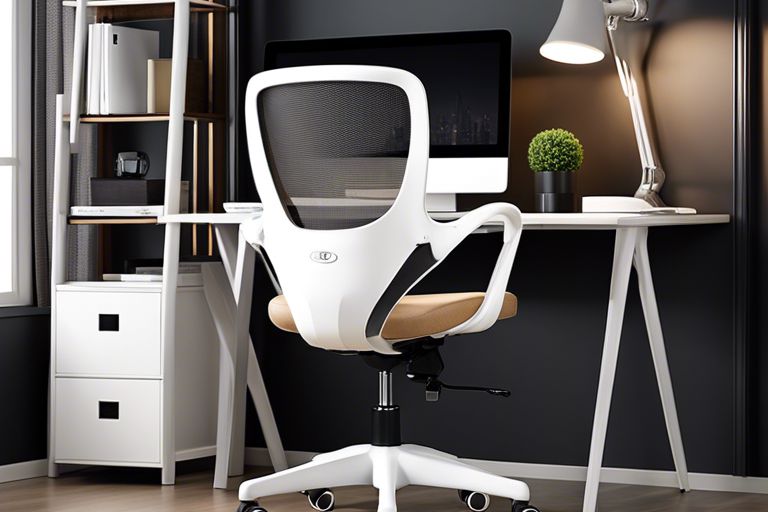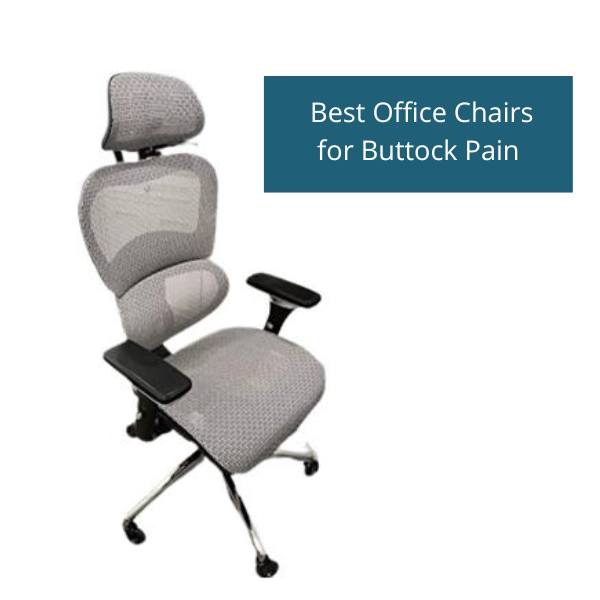Ensuring that you have the right office chair is crucial for your comfort and productivity. Sitting in a chair for long hours that does not support your body type can lead to various health issues such as back pain, stiffness, and poor posture. With the wide variety of office chairs available on the market, it can be overwhelming to choose the best one for you. But fear not, by understanding your body type and the features of different office chairs, you can make an informed decision that will benefit your overall well-being. In today’s blog post, we will guide you through the process of selecting the perfect office chair for your body type, so you can work comfortably and efficiently.
Understanding different body types
For you to choose the right office chair that fits your body type, it’s important to understand the different body types and their characteristics. Below is a breakdown of the main body types and what you should consider when selecting an office chair.
Knowing your body type will help you narrow down the options and find the best office chair for your needs.
| Body Type | Characteristics |
|---|---|
| Tall and slim | Long legs and arms, slender frame |
| Short and curvy | Shorter stature, fuller curves |
| Average height and build | Moderate proportions, medium build |
Body type 1: Tall and slim
If you have a tall and slim body type, it’s important to look for an office chair with adjustable features that can accommodate your long legs and arms. Look for a chair with a high backrest and adjustable armrests to provide adequate support. A seat depth that can be adjusted is also crucial for your comfort.
Body type 2: Short and curvy
For you with a shorter stature and curvier shape, finding an office chair with good lumbar support is essential. Look for a chair with a contoured backrest and a seat that can provide proper support for your curves. Adjustable seat height and tilt features will also help ensure your comfort throughout the workday.
Body type 3: Average height and build
If you fall into the category of average height and build, your main priority should be finding a chair that offers good overall support. Look for a chair with adjustable features that allow you to customize the fit to your body. Pay attention to the seat width and depth to ensure it provides adequate support and comfort for your proportions.
Key features to look for in an office chair
Obviously, choosing the right office chair for your body type is crucial for your comfort and productivity. When selecting an office chair, be sure to pay attention to the following key features:
- Adjustable seat height: Look for a chair that allows you to adjust the seat height to ensure your feet are flat on the floor and your thighs are parallel to the ground.
- Adjustable armrests: Opt for a chair with adjustable armrests that can be positioned to support your arms comfortably while typing and resting.
- Lumbar support: Choose a chair with proper lumbar support to maintain the natural curve of your lower back and prevent slouching.
- Seat depth and width: Consider a chair with adjustable seat depth and width to accommodate your body size and provide ample support for your thighs and hips.
The right combination of these key features will make a significant difference in how comfortable and productive you feel while working at your desk.
Adjustable height and armrests
When selecting an office chair, you should prioritize finding one that offers both adjustable seat height and armrests. This will allow you to customize the chair to fit your body perfectly, ensuring that you can maintain proper posture and comfort throughout the workday.
Lumbar support
Proper lumbar support is essential for preventing back pain and promoting good posture. Look for an office chair that provides adequate lumbar support to keep your spine in its natural, healthy curve. This will help reduce the risk of developing back issues associated with prolonged sitting.
Seat depth and width
Seat depth and width play a crucial role in ensuring your comfort and support while sitting in an office chair. By choosing a chair with adjustable seat depth and width, you can customize the fit to accommodate your body size and prevent discomfort or potential circulation issues. The right seat dimensions will support your thighs and hips, promoting better posture and reducing the risk of strain.

Tips for trying out and selecting the right office chair
Now that you understand the importance of choosing the right office chair, it’s time to actually try some out and make a selection. Here are some tips to help you make the right choice:
- When trying out a chair, sit in it for at least 15-30 minutes to get a feel for its comfort and support.
- Adjust the chair’s height, armrests, and lumbar support to see how well it fits your body.
- Test the tilt, swivel, and recline functions to ensure they meet your needs for movement and flexibility.
- Consider the material and cushioning of the seat to determine if it provides the right level of comfort for long hours of sitting.
- Don’t forget to try out multiple chairs to compare and find the best fit for you.
The next time you’re in the market for an office chair, keep these tips in mind to make an informed decision. For more detailed guidance on selecting the right office chair, check out How to Choose Your Perfect Office Chair.
Testing the chair for comfort and support
When testing an office chair for comfort and support, pay attention to how it feels on your lower back, thighs, and arms. Ensure that the chair provides adequate lumbar support and promotes good posture. It’s crucial to find a chair that offers proper comfort and support to prevent potential back and neck issues.
Considering ergonomic design
As you evaluate different office chairs, take into consideration the ergonomic design of each option. Look for chairs that are adjustable and align with your body’s natural movements. Ergonomic features such as adjustable armrests, seat height, and tilt are important for promoting better posture and reducing strain on your body.
Setting a budget and prioritizing features
When choosing the right office chair for your needs, setting a budget and prioritizing features are crucial steps. Determine how much you are willing to invest in a quality chair and consider which features are essential for your comfort and productivity. Keep in mind that investing in a supportive and comfortable chair is an investment in your health and well-being.

Conclusion
From above considerations, it is clear that choosing the right office chair for your body type is essential for maintaining comfort and preventing long-term health issues. By understanding your unique body type, taking into account adjustable features, and investing in a high-quality chair, you can ensure that you are properly supported and comfortable throughout your workday. Remember to prioritize lumbar support, seat depth, and adjustable armrests when making your decision. Your body will thank you for it in the long run.
FAQ
Q: What factors should I consider when choosing an office chair for my body type?
A: When choosing an office chair for your body type, it’s important to consider the seat height, seat depth, backrest height and angle, armrests, and lumbar support. These factors will ensure proper ergonomic support for your body type.
Q: How do I determine the right seat height for my office chair?
A: To determine the right seat height for your office chair, your feet should be flat on the floor with your thighs parallel to the ground. Your knees should also be at a 90-degree angle. Adjust the seat height accordingly to achieve this position for optimal comfort and support.
Q: What features should I look for in an office chair to support my body type?
A: Look for an office chair with adjustable features such as seat height, seat depth, backrest height and angle, armrests, and lumbar support. Additionally, consider the material and cushioning of the seat to ensure it provides adequate support and comfort for your body type.
- How to choose the right office chair for your body type? - December 19, 2023
- What are the best ergonomic features to look for in an office chair? - December 18, 2023
- Is sitting on an exercise ball an effective alternative to a traditional office chair? - December 15, 2023






